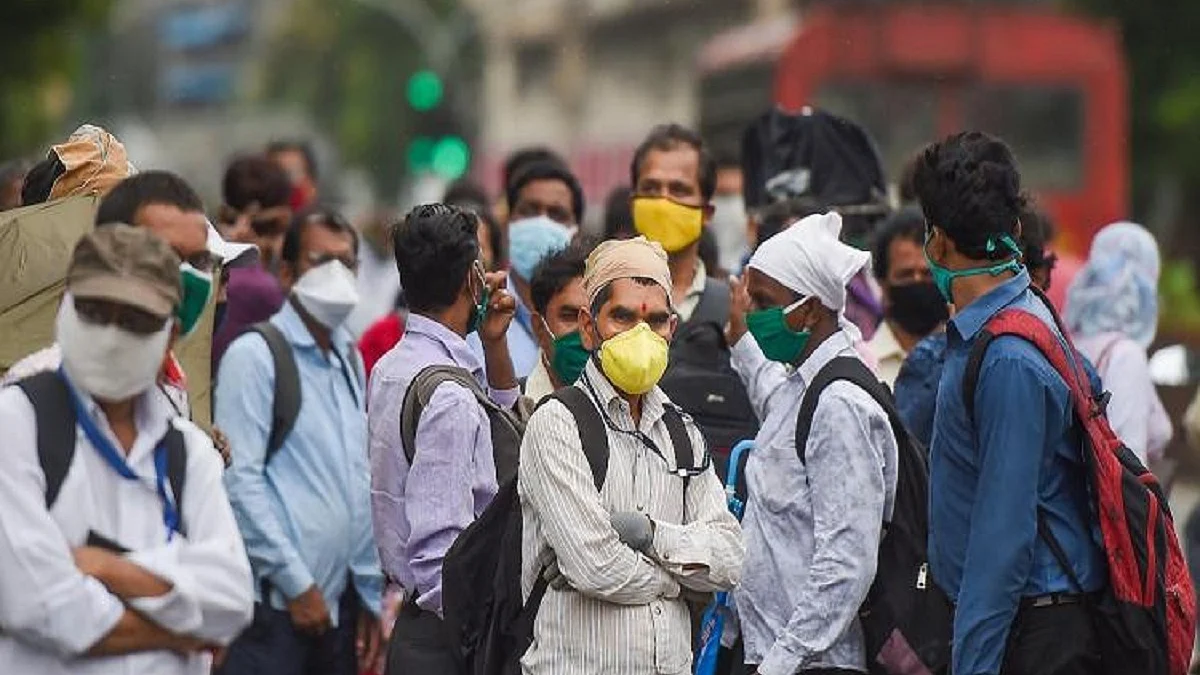Pandemic and the lockdown: The plight of the new urban poor
A vast majority of urban population work in informal sector, which was badly affected by the pandemic. Many such employed people in cities have lost their jobs, with meagre savings to fall upon

Santosh Sathe (34) from Mankhurd, Mumbai’s eastern suburb, who has studied till the third year of an Arts degree, worked in a mall in Navi Mumbai and was paid half his monthly salary, Rs 6,250, for two months of the lockdown. The malls opened in August but he was asked not to return. “They retained only one in seven staffers, saying there is no business,” Santosh said. Each day he tries to find a job as a “helper” for Rs 500 a day. “There is no guarantee that I find work daily,” he said, as per a story published by The Indian Express.
Anita, Santosh’s sister-in-law, says that a year ago, she set up a sewing machine to add to the family income. “That machine lay shut for a few months during the lockdown. Now, very few women come to get dresses or blouses. There is no extra money to be spent on these things anymore,” Anita said. Her two children, 5 and 11, are finding it difficult to manage online classes on the single smartphone they have to share.
Few have a first-hand sense of the distress better than Kishan Singh Rajput who owns a jewellery shop in Janu Pada slum in Kandivali East. He said he had gold jewellery worth Rs 70 lakh pawned with him for cash since the lockdown - as many as 300 people have mortgaged their bangles, chains, earrings and even ‘mangal sutras’. “They take cash in return which they will repay with 2 per cent interest each month. Some said they wanted to pay rent, others had a hospital bill,some others had to pay their kid’s school fee. Everyone is helpless,” Rajput told the news daily.
Prolonged lockdowns and associated restrictions tripled urban unemployment in March and April. It needs to be mentioned that a vast majority of urban population work in unorganized (informal) sector of the economy, which was badly affected by the pandemic. Many such employed people in cities have lost their jobs, with meagre savings to fall upon.
An army of women and men, from domestic workers to store-clerks, staff of small manufacturing and service units to delivery staff and drivers, has been without their fixed income for seven months. With salaries gone, they are pawning gold jewellery to pay school fees, rents remain unpaid and many depend on the meals and dry rations distributed by NGOs and municipal corporations.
Individuals at the bottom of the income pyramid have been affected by job losses far more than the individuals at the top of the income pyramid and this difference is striking in cities. Even as the threat of the disease persists, Delhi-NCR, significantly affected by COVID-19 early on, is showing signs of an economic recovery. However, this recovery is uneven and the most vulnerable urban residents seem to be the last to recover. They were also the ones most affected during the lockdown.
As the Delhi-NCR Coronavirus Telephone Surveys (DCVTS) show, the urban poor, particularly the urban informal sector workers, showed the greatest signs of distress during the lockdown and reported greater hunger, indebtedness and an inability to pay rent.
A strict lockdown since late March has led to sudden loss of employment among millions of poor workers in India. With food prices rising, they are now facing a dual crisis during the COVID-19 pandemic. Reports from all over the country indicate that the prices of a variety of vegetables including onions are on the rise. The data showed that India's consumer food price index during the month of September rose to 10.68 per cent against 9.05 per cent reported for August 2020. Restricted transportation, floods, errant rains, unavailability of produce and higher fuel rates have significantly pushed up the prices of vegetables and staples across the country. Tomato prices in some retail markets across the country are nearing Rs 80 per kilo, while onion prices are nearing Rs 100 per kilo in retail markets.
While the government had announced a free-food scheme to help migrant workers and urban poor families during the lockdown period, data suggests that there was a large gap between intended coverage of the scheme and actual beneficiaries on the ground. Social safety nets like MGNREGA and PM Kisan have historically been targeted towards rural people. While such safety nets for the rural poor have been offering succour to them, the pandemic and the lockdown have disproportionately affected urban workers, particularly wage workers who had few assets or savings to fall back upon. The urban poor are still finding it difficult to return to work. Targeted social safety nets are necessary for the new class of urban poor created by the pandemic, till normal conditions return.
(V Venkateswara Rao is an alumnus of IIM, Ahmedabad and a retired corporate professional)
Follow us on: Facebook, Twitter, Google News, Instagram
Join our official telegram channel (@nationalherald) and stay updated with the latest headlines